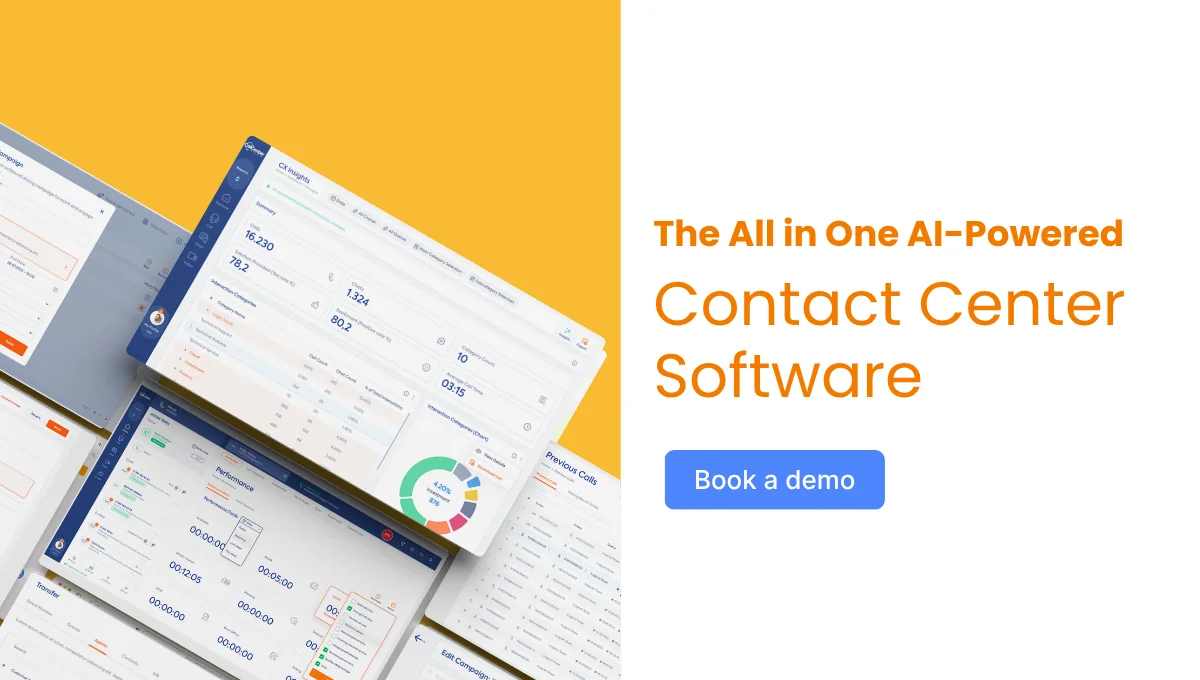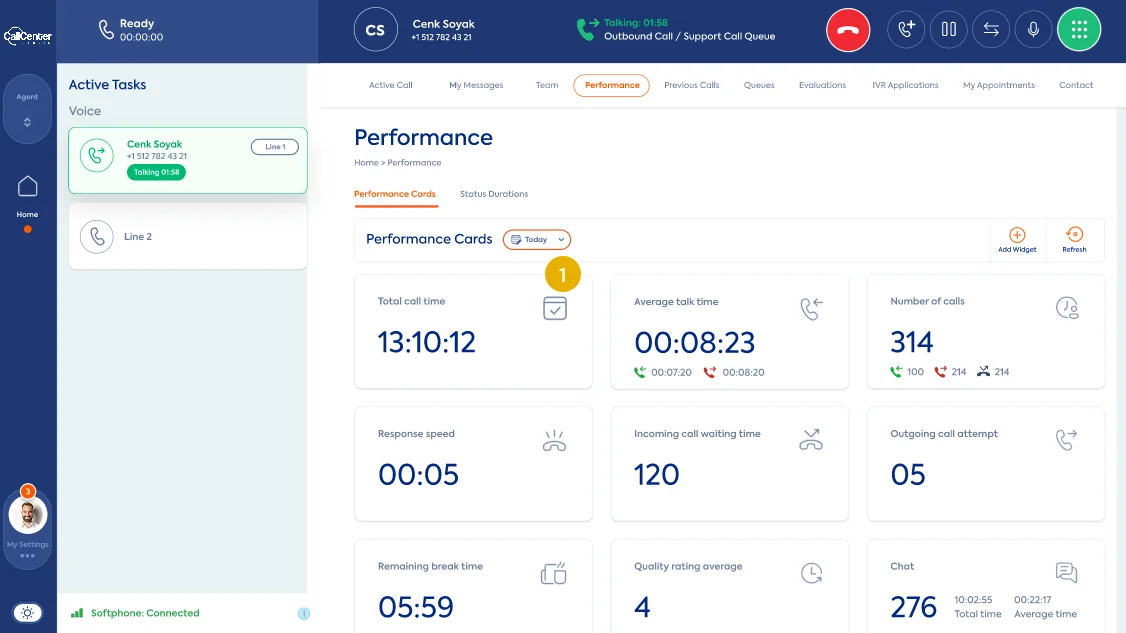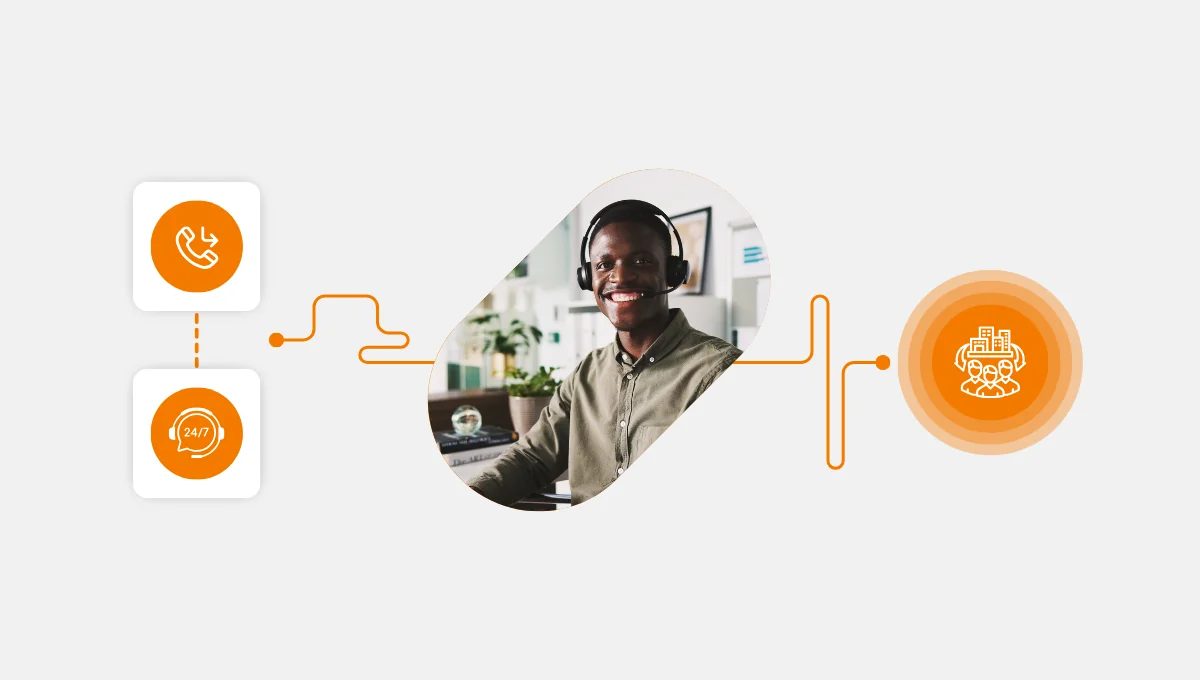Black Fridays test your contact center’s ability to stay calm, responsive, and quality-driven under pressure.
That means you need metrics that give you immediate visibility into both operational control (what’s happening right now) and customer experience health (how people feel about it).
Below, we present six Black Friday contact center metrics that become your control panel during this crazy time.
1. Call Volume Spikes & Call Volume Management
The first metric is the call volume spike.
This metric is important because on Black Friday, call or conversation volume can double or even triple over your typical daily average, especially for retailers or e-commerce brands. You want to measure mainly three things:
- Minute‑by‑minute call volume vs. expected (baseline) volume
- Peak hours (e.g., hourly or half‑hourly spikes)
- Overflow and abandonment patterns
Use these three data and contact center analytics solutions to move fast.
For instance, if CX Insights spots a surge, you can reroute calls automatically, bring in backup agents, or fire up self-service options to keep things flowing.
Spot your peak hours so you can schedule smartly, such as bulking up coverage during lunch rush or those late-night spikes.
And keep an eye on where people are dropping off so you can tweak your queues or offload the easy stuff to automation.
2. Average Wait Time (and Abandonment Rate)
Retailers burn goodwill faster than inventory during holiday chaos. Every second a customer waits is a chance they hang up, go to a competitor, or escalate dissatisfaction. That is why during Black Friday, you need to check:
- Average wait time (seconds or minutes) during peak intervals
- Abandonment or “drop” rate (calls where the customer hung up)
- SLA compliance (percentage handled within target wait thresholds)
With real-time data and smart routing, your system can jump in and make quick decisions such as sending calls to whoever’s free, pushing easy stuff to bots, or offering a callback instead of keeping people on hold.
That way, your hold times don’t spiral out of control and ruin someone’s Black Friday mood.
3. First Contact Resolution (FCR Rate)
On Black Friday, callers want issues solved fast. Getting them off the line in one contact reduces repeat contacts, relieves load, and boosts satisfaction.
What do you need to monitor?
- Percentage of tickets resolved on first interaction
- Root causes for repeat contacts (e.g., payment, shipping, returns)
- Time to close unresolved after repeated contacts
CX Insights allows you to segment FCR by issue type or agent group and correlate it with sentiment or interaction transcripts. If FCR dips during your midday spike, it’s your early warning that more training or scripting support is essential.
4. Agent Performance Tracking
Agents are your frontline actors, and under peak load, small performance gaps compound fast. So, as a manager, it is your job to identify who’s cracking, who’s thriving, and where coaching is needed in real-time.
The kind of data you want to keep an eye on:
- Calls handled per hour/occupancy rate – shows how productive and busy each agent is
- Adherence to schedule – tells you if agents are sticking to their shifts (and not disappearing mid-rush)
- Wrap-up times – helps you spot where agents might be taking too long between calls
- Quality scores (QA evaluations) – give a sense of how well agents are handling conversations
- Sentiment drift or escalation incidents per agent – flags agents who may be having a rough time or need support
5. Customer Sentiment Analysis
It’s not enough to resolve calls; what dictates loyalty is how people feel while resolving. On Black Friday, frustration and urgency run high. You need eyes on tone, emotion, and escalation signals in real time.
What to monitor:
- Positivity vs negativity trends over intervals
- Sentiment by call topic (e.g., “order not delivered” vs. “refund issue”)
- Spike in negative sentiment or escalation keywords
Because customer sentiment analysis is baked into CX Insights, you can detect conversations turning sour while they’re happening. Use that to prompt agent nudges, supervisor takeovers, or priority routing to more experienced staff.
6. CSAT & Post‑call Feedback
All your metrics lead to the ultimate gauge of how well you delivered under extreme conditions. CSAT(Customer Satisfaction Score) is that reliable north star.
To measure your CSAT, look at:
- The post‑call or post‑interaction survey responses (e.g., 1–5 rating)
- The trends over time (hourly, daily) to catch dips
- The relation between CSAT and other metrics
The relation between CSAT and other metrics is especially important because CSAT scores are impacted by other metrics, like:
- How long customers waited (wait time),
- Whether their issue got solved the first time (FCR),
- How they felt during the interaction (sentiment), and
- Which agent or team handled them?
Understanding these connections helps you figure out what’s really driving satisfaction. So you can double down on what works and fix what doesn’t.
Why Many Contact Centers Still Fall Short
It’s one thing to know these metrics – another to have a unified system that tracks and acts on them across all channels.
Too often, teams rely on dashboards pasted from multiple tools (video calls, chat, email) and struggle to see cross‑metric insights.
If you don’t already run your center through a cloud contact center software with integrated contact center analytics solutions, you’ll find yourself lurching from spreadsheet to alert to manual intervention.
But that’s the old paradigm.
When your Black Friday operations demand robust platform support, Call Center Studio steps in as your command center.
Our AI‑driven analytics engine that seamlessly powers:
- Call volume management with anomaly detection and forecast alerts
- Average wait time monitoring and dynamic routing triggers
- First contact resolution tracking and root cause analytics
- Agent performance tracking, including real-time dashboards and coaching nudges
- Customer sentiment analysis on live interactions
- And the customer satisfaction score correlation across every metric
Let’s talk.
Sign up for a demo of Call Center Studio + CX Insights and see how to turn Black Friday into a victory lap.






